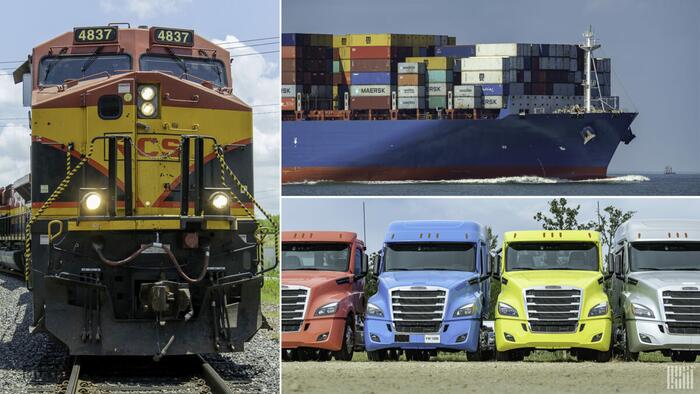


By Mark Solomon of FreightWaves
In 2022, U.S. business logistics costs, or what is spent to keep the nation’s logistics network humming, grew by an astounding 19.6% to a record $2.3 trillion, representing 9.1% of national gross domestic product, according to the 34th annual State of Logistics Report.
On a percentage basis, financial cost of inventory led the way with a 90.2% increase, fueled by the Federal Reserve’s aggressive interest rate increases. From the standpoint of modes, truckload costs rose 6.2% to $403.8 billion. Less-than-truckload costs rose 6.4% to $96.3 billion, while private or dedicated costs rose 6% to $95.8 billion.
Parcel costs rose to $217 billion, a 4.7% increase. Rail costs rose 17.6% to $99.2 billion. Maritime — which includes domestic U.S. — rose 18.4% to $36.4 billion, while airfreight rose 1.7% to $66.8 billion.
Coming off this performance, supply chain demand is likely to remain stagnant or diminish for the remainder of 2023. Still, any downturn in the U.S. economy is likely to be mild and short lived, the report, unveiled in Indianapolis Tuesday, said.
This dramatic run-up has been good news for various providers.
“Logistics is a solutions-based discipline,” said Andy Moses, senior vice president of Penske Logistics, the third-party logistics giant and presenter of the report to the Council of Supply Chain Management Professionals. Moses appeared with other executives on a Thursday webinar to discuss the report. “The requirements have never been greater and solutions’ needs from shippers are off the charts.”
A return to post-pandemic normalcy is allowing executives to seize the moment for what the report, in its theme, called a “great reset.” According to the report, this involves a “revisiting of former arrangements, some of them overtaken by recent events, some of them cobbled together rather hastily amid the confusions of the pandemic. It is time to get clear about what is working now and what is needed to ensure resilience for an uncertain future.”
The period that the report covers, all of calendar 2022 and the early months of 2023, has been about “getting back in sync,” the report’s author, global consulting firm Kearney, said. Among the core features is a “shift among logistics executives from strictly transactional perspectives to a more strategic and holistic sense of the function’s role. Flexibility and resilience have overtaken cost as the key discussion points among supply chain leaders, according to executives appearing on the webinar.
“What’s clear … is that the age of building supply chains just around cost-reduction considerations is over,” the report said. “A new value has taken center stage: resilience.”
The report cautioned, however, that the optimal ways of achieving resilience are not always present. For example, an increasing fragmentation of demand means that massive distribution center footprints are becoming less profitable. Yet shippers often need a large footprint to ensure high levels of service and sufficient inventory levels, according to the report.
Logistics leaders are responding by taking a more holistic and comprehensive view of their value chains. They are diversifying their sourcing to avoid overreliance and to ensure ample workarounds in the case of sudden disruption, the report said.
“Our report shows that now is the time to begin thinking seriously and proactively when it comes to building strategic capacity,” said Balika Sonthalia, senior partner at Kearney and the report’s co-author. “Although the market has swung back in shippers’ favor — to the detriment of carriers — we cannot emphasize enough the importance for all industry participants to begin planning for geopolitical tensions, cybersecurity threats, climate change and related natural disasters, slowing e-commerce growth and global recessionary factors.”
Below is a tally of some of the main sectors:
